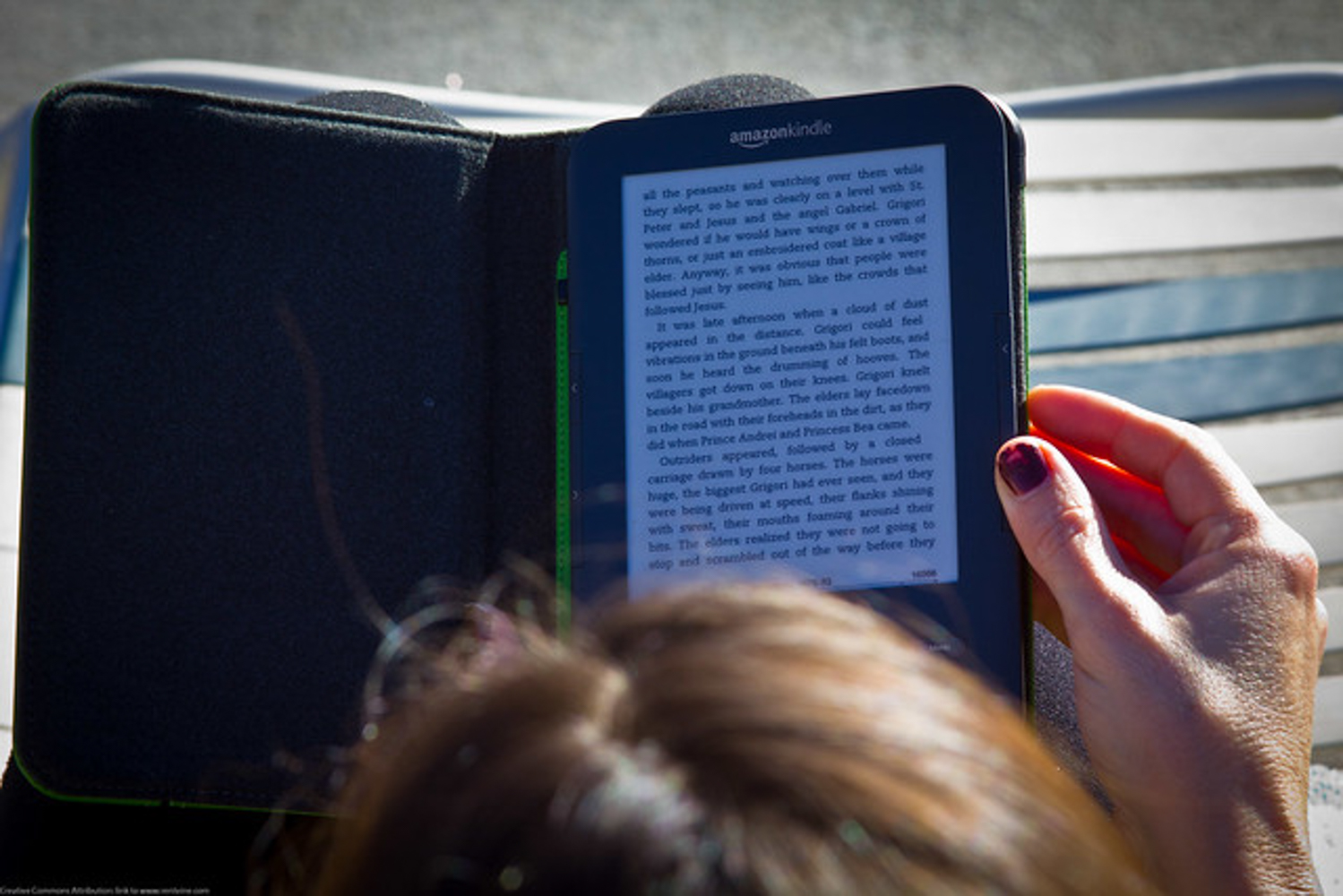Audiobooks and ebooks have seen a rise in popularity in the last few years. But have you ever wondered what goes into the production of audiobooks? Or what exactly an ebook is and how its formatting works across all your devices? It’s easy to get swept up in the stories we experience via ebooks and audiobooks, but it adds another layer of appreciation when we can better understand how they make it into our digital libraries.
Audiobooks have a very specific production process. They are not dissimilar to your favorite TV show or movie in the way that they have a casting process before recording can actually begin. The producer of the audiobook first gains an understanding of the vision from the author and/or the executive director. Things such as age, gender, and tone are all important to casting the right narrator. In some cases, two narrators will be casted for one book when there are dual or multiple POVs (points of view). Once the narrator or narrators are chosen, the actual recording process can begin. Audiobooks are recorded in either a professional studio that is associated with the producer or they are recorded at a home studio. Some projects can have a director on site to instruct the narrator. As Christine Bollow notes, “Penguin Random House, for example, usually has directors on their projects, while some companies trust an experienced narrator to self-direct.”
All audiobooks must estimate a final running time for the project. There is an industry set equation where the number of words in the print file is divided by the number of words per hour. For example, a novel that is seventy-five thousand words would be divided by the estimated number of words per hour, usually ten thousand. Therefore, the total amount of hours would be estimated at about eight hours. For an experienced audiobook narrator, it would take on average twenty to thirty hours in the studio to produce an eight-to-ten-hour book. Upon completion of the recording, the audiobook goes into postproduction where it enters its first round of editing. Editors will comb through the audio to remove things such as issues of pacing, unnecessary or unintentional noises, mispronunciations, remove mouth clicks, etc. The final step, once an audiobook has been fully edited and approved, is distribution of the audiobook.
So, what is an ebook? An ebook is an electronically created book that can be created from a print book or stand on its own as an exclusively digital book. There are three types of popular formats for ebooks such as EPUB, Word documents, and PDF files. The main part to understand is that all ebooks are unable to be edited. If you are able to change or alter the text in any way, it is no longer an ebook. However, highlighting sections or leaving comments on certain parts of the text within the ebook are possible, as well as changing font or font size. Ebooks adapt to the device they are being viewed on; however, there are two formats that EPUB supports: reflowable and fixed-layout. A reflowable EPUB will “adjust to the reader’s device, providing an optimal reading experience by automatically resizing text and images” according to Mihaela Bidilică. Whereas fixed-layout EPUBS maintain their specifically set arrangement of content within each page while still being able to recognize the device it is being viewed on.
Ebooks can be read on a phone, tablet, computer, etc. They can either be purchased or rented via supporting online stores such as Amazon and from public libraries on the Libby app. While a book rented via Kindle Unlimited on Amazon will be immediately available to the reader, a book on the Libby app may require a lengthy wait. Why is that? The first reason is that libraries pay a higher cost for the book than an individual purchasing an ebook and therefore will have fewer copies to loan out. The second reason is that “publishers often require that each digital copy is only loaned to one person at a time (just like physical library books). This ensures that authors, narrators, and other creators are paid fairly for their work, even if it’s consumed digitally” (OverDrive). Similar to libraries, Kindle Unlimited operates the same way and limits rentals to a total of twenty books.
Hopefully these tidbits of information on Audiobooks and ebooks will have you looking at your digital libraries more fondly!
Written by Elle Edwards.

